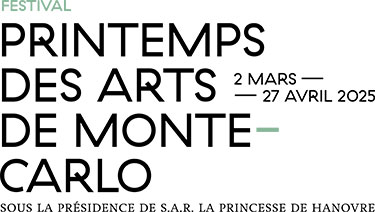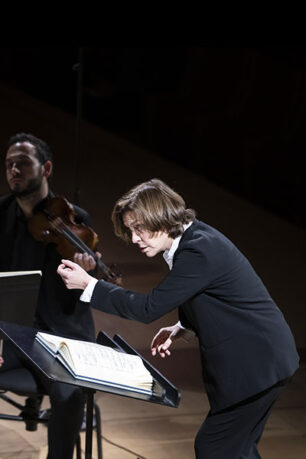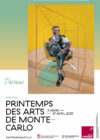Between June and August 1788, even though he had written only three symphonies since moving to Vienna seven years earlier, Wolfgang Amadeus Mozart produced an impressive triptych in the space of a few weeks. His Symphonies Nos. 39, 40 and 41 are remembered as the pinnacle of the repertoire as well as his final foray into the genre. We don’t really know what prompted the composer to return to a symphonic form he had so neglected. It could be however that being in the throes of serious financial difficulties at the time and worried about his wife’s health, Mozart hoped to programme these new works in subscription concerts, and thus get out of a tight spot.
Within this trilogy, Symphony No. 40 naturally stands out for its key of G minor. Mozart had only once before opted for a minor key in this type of work: fifteen years earlier, for the Symphony No. 25 – also in G. The stakes were clearer then. At the age of 17, Mozart was following in the footsteps of his elder, Joseph Haydn, who between the late 1760s and early 1770s had written several symphonies in the minor key, worthy representatives of the Sturm und Drang (Storm and Passion) movement. The young Mozart took his turn, experimenting with the characteristics of this Romanticism before its time: Symphony no. 25 opens with a tornado of unstable, agitated syncopations that override any other melodic ideas. Its Menuetto is equally dark, intoned in an authoritative unison, and its Finale revives the stormy climate, tense harmonies and syncopated writing of the first movement. Only the Andante marks a real lull in this symphony: the key of E-flat major brings a welcome lightening, while the writing in thirds gives us a sense of a tender embrace between the bassoon couple and the two violin sections.
From the very first bars of Symphony No. 40, between the frenetic eighth notes of the accompaniment, the breathless writing of the theme and the sudden thunderclaps of the orchestra, it seems clear that Mozart is returning to the stormy climate of his early work. But something has changed. Although the composer once again inserts an Andante in E-flat major, this time the interlude is sprinkled with chromaticisms that are discreet but no less painful. The difference is even more remarkable in the Menuetto: it no longer has the clear organisation, the beautiful symmetry, the solid built of that of Symphony no. 25. Mozart no longer lends himself to the game of dance; he shifts beats, shifts instruments in relation to each other, crosses melodic lines, adding tension even in the a priori innocuous concluding sections. In the middle of this third movement, whereas Symphony No. 25 followed the old trio model (with an elegant ensemble of two oboes and a bassoon), Symphony No. 40 features convoluted timbral relays and seems to free itself completely from the three beats of the bar. Mozart is no longer in the codified theatre of Sturm und Drang; the entire symphonic form is shaken to its foundations, right up to the feverish finale, punctuated by unexpected swerves, abrupt silences and daring contrapuntal passages.
Symphony No. 40 is not the only one in Mozart’s final triptych to evoke a work from the past. Symphony No. 41“Jupiter” is based on a four-note motif (C-D-F-E) that was already prominently played by the horns, in the composer’s very first symphonic work. In Symphony No. 1, the very young Wolfgang (then barely 8) brillantly demonstrated that he had already mastered the principles of the three-movement Italian symphony, learnt in London from the famous Johann Christian Bach (son of Johann Sebastian). Beyond the (crystal-clear) general architecture and (well organised) melodic ideas, the singular personality of the central Andante should be noted. This is where the famous Mozartian four-note motif appears, while superimposed instrumental lines create a complex rhythm. The otherworldly atmosphere and E-flat major lighting deliver a few thrills.
The same harmonic colors and nostalgic tenderness are to be found more than twenty years later in another Andante in E-flat major – that of Symphony No. 40. Between June and August 1788, while writing his final triptych at his ailing wife’s bedside, did the great Mozart recall the 8-year-old Wolfgang, who was composing his first symphonic opus with the help of his older sister Nannerl? While these reminiscences may have been unconscious, the echo across the years is very real, and makes listening to these symphonies all the more moving.



